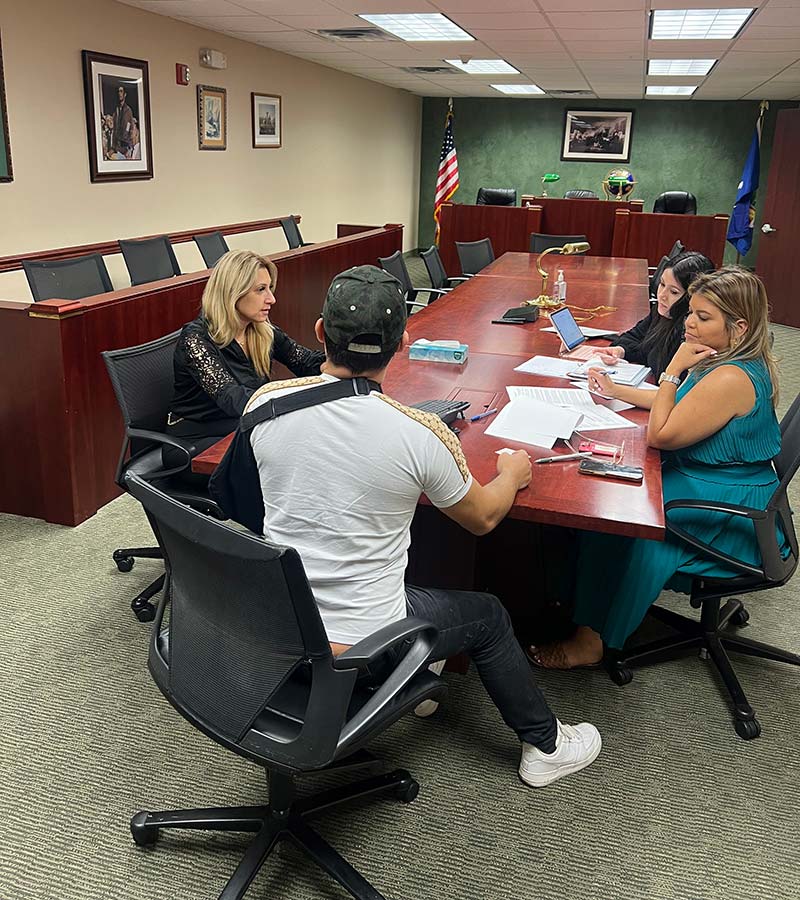4 Causes of Scaffold Injuries on Construction Sites

4 Causes of Scaffold Injuries on Construction Sites
At some point during their work history, almost two thirds of the nation’s 2.3 million construction workers will perform tasks on or near a scaffold. According to Department of Labor statistics, more than 4500 construction workers will suffer scaffold-related injuries annually, and those injuries will lead to roughly sixty fatalities every year.
The NYC & Long Island construction injury lawyers at Aronova & Associates hope that construction workers can reduce their risk of injury from scaffold accidents by understanding the common causes of those accidents. If, however, a scaffold accident does lead to an injury or fatality in New York City or on Long Island, our attorneys will work tirelessly to recover damages for construction workers injured due to an employer’s or someone else’s negligence.
Through our many years of experience in representing workers that have been hurt on scaffolds at construction sites, we see the same four common causes of those injuries.
Scaffolds that are Erected Improperly
A scaffold with improperly-secured planking, loose guard rails, or worn connection hardware is prone to failure, leaving workers exposed to injuries from falls. Scaffolds should always be erected, inspected, and tested by qualified technicians before construction workers use them. A job site manager that is anxious to keep a construction project on schedule might be tempted to rush these tasks, in which case construction workers might be forced to assume greater safety risks when working on those scaffolds.
Objects that Fall from Scaffolds
Tools, construction equipment, and other materials should always be fully secured when they are used on elevated scaffolds. A heavy object that is dropped from even a short elevation can gain enough momentum during a fall to cause serious injuries if that object strikes a construction worker who is at ground level. Construction companies that fail to provide adequate retaining straps and other mechanisms may be found to be negligent if that failure is a proximate cause of a dropped object that hits and injures another construction worker.
Electric Shocks from Contacts with Power Lines
Metal scaffolding conducts electricity. Construction sites might not always have an option of erecting scaffolding far away from power lines, but if that risk is present, managers need to take extra precautions to shield scaffolding from accidental contact with those lines. Electrocution risks for workers on those scaffolds will be significantly greater if the metal scaffolding creates a grounding path for an electrical arc.
Inadequate Worker Training in Scaffold Usage
Courtroom interpretations of New York Labor Law Section 240 (commonly called the ”Scaffold Law”) prevent a construction company from using a contributory negligence defense against claims for compensation under that Section. This does not suggest, however, that construction workers can disregard their own safety when they work on or near scaffolds. More appropriately, construction companies should offer regular training sessions for their employees in the proper way to perform construction job tasks on scaffolds, including the best ways to secure safety harnesses and to climb onto and off of scaffolds. Construction workers that do not receive adequate training will increase their own risks as well as the risks of their co-workers.
Aronova & Associates: Your New York Construction Scaffolding Accident Lawyers
The lawyers at Aronova & Associates regularly represent construction workers injured on scaffolds in Manhattan and throughout the five boroughs, as well as Nassau County and throughout Log Island. In addition to removing the contributory negligence defense, New York’s Scaffold Law also allows injured workers to sue for pain and suffering, and other remedies not normally found in workers’ compensation claims. We use every tool available in our and the State’s legal toolkit to recover the largest damages awards that may be available for our construction worker clients.
Please call Aronova & Associates as soon as possible after you have suffered a construction site scaffold injury to speak with one of our experienced attorneys, who will guide you through the process of how we can help you recover a complete damages award to compensate for your injuries.
Subscribe for our monthly Newsletter! Receive insights, views from the experts right in your inbox.
Contact Us
Ready to Work For You
Aronova & Associates is a firm for all New Yorkers. We are your trusted legal support when it matters most. Our team provides multilingual, tailored guidance to meet the diverse needs of New Yorkers. The first step in providing you with the help you need is a free consultation to discuss your case. When you’re ready to talk, we’re ready to work for you.
- 24 / 7
We Offer Legal Representation In:
- Spanish
- Russian
- Korean
- Hindi
- Gujarati
- Punjabi
- Urdu
- Turkish
